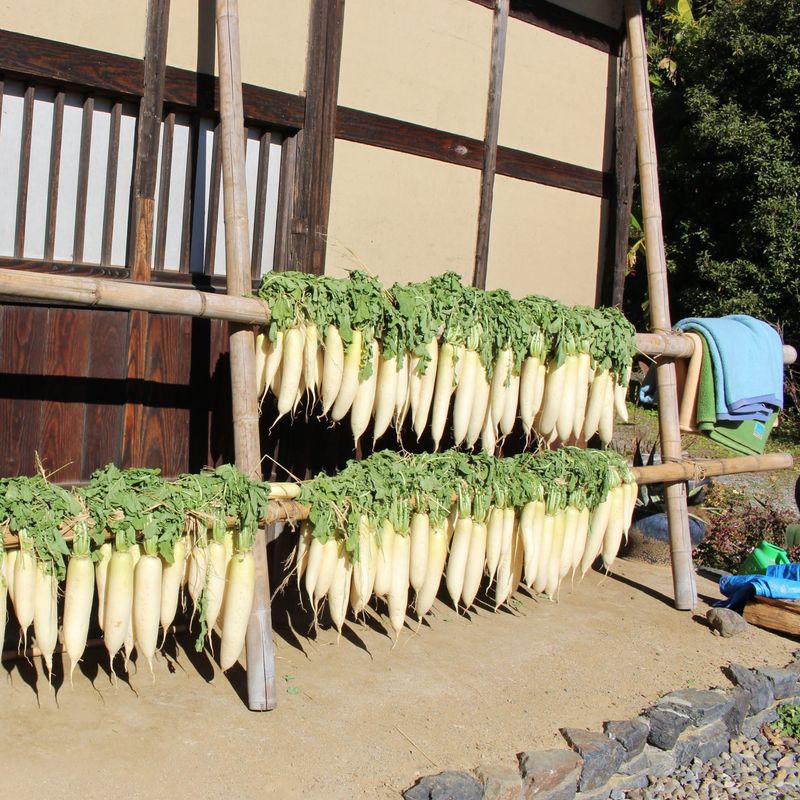Nov 20, 2025
Japan's dried food culture
November 20th is "Good Dried Food Day" in Japan. Dried food is called kanbutsu in Japanese, were foods are preserved by removing moisture to prevent spoilage and concentrate nutrients. Dried foods are a staple of the traditional pantry used for everyday cooking and long-term preservation. Examples include dried vegetables such as kiriboshi-daikon (pictured drying in the sun) or Hoshi Shiitake, dried seaweed such as nori and dried seafood such as Azi no Himono. Archeological finds suggest that dried foods have been used in Japan for at least 4000 years.
Dried food has always been important in Japan because of a mixture of reasons. One of the main reasons is the weather. Japan has a very high humidity level for most of the year, except for in winter. The level of humidity is high enough to make any food rotten, especially before fridges were widely available. In addition, for centuries Japan’s leading industries were agriculture and fishing. Food preservation by drying was essential and thankfully very effective. Even before the electrical age, Japanese people were successfully able to keep food, such as crops, leafy vegetables, and even fish meat, edible for several months.
Dried foods have many benefits, not just a long shelf life. For example, the nutrients are concentrated, healthy and gentle. Furthermore, they give a sense of security, especially in a place like Japan when you never know when the next natural disaster will be. They are an important ingredient in Japan and can be used in a wide range of dishes such as broth, simmered dishes, and dressings. Do you use dried foods in your cooking? And / or do you have some in your emergency kit?

Former nickname was "Saitama". Changed it to save confusion on place review posts! Irish, 20+ years in Japan! I also write on my personal website: insaitama.com



0 Comments